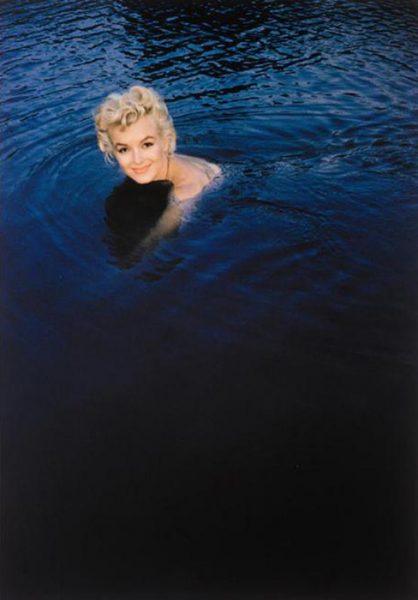
Over at Princeton’s Town Topics, Stuart Mitchner compares the lives of two American legends: Marilyn, who died on August 4, 1962 (officially dated August 5th); and Herman Melville, author of Moby Dick, who was born on August 1, 1819; married on August 4, 1847; and met Nathaniel Hawthorne, author of The Scarlet Letter, on August 5, 1850.
(Another link between these two American legends is John Huston, who directed a screen adaptation of Moby Dick, starring Gregory Peck, in 1958.)
“And of course both leading players in the great American reality show were doomed to fall, Melville, his masterpiece all but ignored by the press when it wasn’t being scorned, telling Hawthorne in 1856 that he had ‘pretty much made up his mind to be annihilated’ (only to die in obscurity almost four decades later); Marilyn in her own freefall of failed marriages, miscarriages, professional humiliation, dying world famous and alone at 36.
Though there may be no prototypical Marilyns in Melville’s work, there are definite intimations, beginning with Fayaway in his first book, Typee: A Peep at Polynesian Life (1846): ‘This gentle being had early attracted my regard, not only from her extraordinary beauty, but from the attractive cast of her countenance, singularly expressive of intelligence and humanity,’ with ‘a tenderness in her manner which it was impossible to misunderstand or resist.’ Strange but true, that the author now best known for Moby Dick and Billy Budd, with their all-male casts, created the literary equivalent of a Hollywood diva he delights in personally costuming: ‘Out of the calico brought from the ship I made a dress for this lovely girl’ that ‘began at the waist, and terminated sufficiently far above the ground to reveal the most bewitching ankle in the universe.’
There are also intimations in Melville’s work of the troubled, vulnerable, lonely being Miller perceived in ‘the saddest girl’ he ever knew. In Pierre: or The Ambiguities, the prodigiously immoderate, mannered and tormented, at once dated and uncannily ‘modern’ novel written in the aftermath of Moby Dick, the bipolar title character finds himself obsessed by a ‘mystical face,’ a ‘shadow’ that has ‘come forth to him’ and that appears to take the form of his mysterious, illegitimate half-sister, Isabel. “The face haunted him as some imploring, and beauteous, impassioned, ideal Madonna’s haunts the morbidly longing and enthusiastic, but ever-baffled artist.’ Evoking the beguiling ambiguity at the heart of Marilyn’s appeal, on the screen and in her imperishable afterlife, Melville’s Isabel ‘lifts her whole marvelous countenance into the radiant candlelight,’ and when ‘for one swift instant, that face of supernaturalness unreservedly meets Pierre’s,’ it’s with a ‘wonderful loveliness, and a still more wonderful loneliness.’
Enchanted Island, an unlikely film version of Typee, was directed by the veteran Allan Dwan in 1958 with 50-year-old Dana Andrews in the Melville role and petite blonde Jane Powell, age 30, as Fayaway. The last picture made at RKO, it was released by Warners with the Four Lads singing the title song. (Feel free to roll your eyes.) More interesting and perhaps even more unlikely is Pola X, a sexually explicit French adapatation of Pierre directed by Leos Carax that turned up in 1999 with the late Guillaume Depardieu in the title role and Yekaterina Golubeva as Isabel. The film title is an acronym of the French title of the novel, Pierre ou les ambiguïtés, plus the Roman numeral ‘X’ indicating the tenth draft version of the script that was used to make the film.
In the best, strangest, and most unlikely of all possible worlds, Marilyn Monroe would have been a heartbreaking Fayaway and a devastating Isabel.”